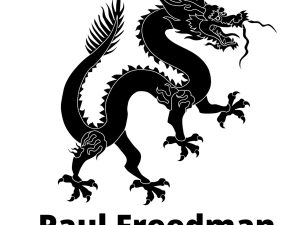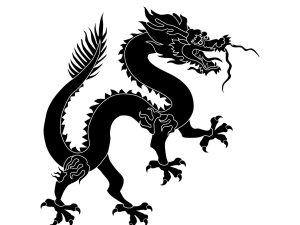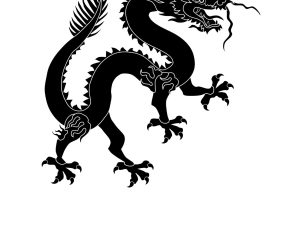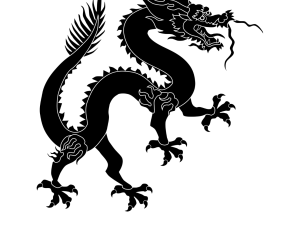Mastering Classical Chinese Herbal Medicine: A Six Divisions Approach
Welcome to a transformative journey into Classical Chinese Herbal Medicine. My teaching methodology goes beyond traditional learning to offer you a deeper, more intuitive understanding of herbal formulas through the ancient wisdom of the six divisions (liu jing).
Why the Six Divisions Matter
While many practitioners stop at the five elements, I’ll show you how the six divisions – first described in the Huang Di Neijing – provide an elegant framework for understanding both herbal formulas and human physiology. This classical approach reveals profound insights into how organs work in pairs to maintain health:
• Tai Yang & Shao Yin
• Yang Ming & Tai Yin
• Shao Yang & Jue Yin
What Makes This Course Material Different
Instead of memorizing endless lists of herbs and formulas, you’ll learn a systematic approach that:
– Organizes formulas by their functional relationships
– Connects classical wisdom with clinical application
– Builds on your existing TCM knowledge
– Reduces complexity while deepening understanding
Course Structure
Each module explores:
– Distinctive characteristics of each division
– Essential herbs for key classical formulas
– Modern formula applications
– Clinical pattern recognition
– Practical treatment strategies
The Result
By understanding how classical formulas align with the six divisions, you’ll:
– Need fewer herbs to achieve better results
– Recognize patterns more accurately
– Make more confident clinical decisions
– Develop a deeper appreciation of Chinese Medicine’s elegance
This course material is designed to transform not just your understanding of herbal medicine, but your entire clinical practice. Whether you’re a seasoned practitioner or recent graduate, you’ll gain practical insights that make Classical Chinese Medicine more accessible and effective.
Ready to elevate your practice? Explore my course materials below and begin your journey into the deeper wisdom of Classical Chinese Herbal Medicine.
Course Material
Introduction to the Shang Han Lun
Unlock the Ancient Wisdom of Chinese Medicine: Understanding the Shang Han Lun
Are you a practitioner or student of Traditional Chinese Medicine looking to deepen your understanding of one of its most fundamental classical texts? Paul Freedman’s comprehensive guide “Understanding the Shang Han Lun” offers a clear, practical approach to mastering this essential knowledge.
This invaluable resource:
– Breaks down complex classical concepts into understandable, practical insights
– Bridges critical knowledge gaps between the Shang Han Lun and Yellow Emperor’s Classic
– Provides detailed explanations of the six conformations and their clinical applications
– Offers clear connections between theory and practical treatment strategies
What sets this guide apart:
– Systematic approach that builds understanding from foundational principles
– Clear explanations of how theoretical concepts translate to clinical practice
– Detailed exploration of timing in treatment based on classical principles
– Essential background information often missing from modern TCM education
Perfect for:
– TCM practitioners seeking to enhance their clinical effectiveness
– Students struggling to grasp classical concepts
– Clinicians wanting to integrate classical wisdom into modern practice
– Anyone interested in deepening their understanding of Chinese Medicine’s theoretical foundations
Understanding the Shang Han Lun is more than just a textbook – it’s a practical guide that will transform your comprehension of Chinese Medicine and enhance your clinical results. While mastering the Shang Han Lun traditionally requires a lifetime of study, this guide provides the essential framework you need to begin applying its wisdom in your practice today.
Take your practice to the next level with this clear, comprehensive guide to one of Chinese Medicine’s most important classical texts.
Formulas Based on Gui Zhi Tang
Master the Art of Classical Chinese Herbal Formulas
A Comprehensive Guide to Gui Zhi Tang and Its Modifications
by Paul Freedman, TCMWoerden.com
Unlock the profound wisdom of Traditional Chinese Medicine through this authoritative guide to one of its most fundamental and versatile formulas – Gui Zhi Tang. This meticulously researched work provides an unprecedented deep dive into the theoretical foundations and practical applications of over 50 classical herbal formulas.
What You’ll Discover:
- In-depth analysis of the three core aspects of Gui Zhi Tang: yang qi tonification, yin qi nourishment, and earth support
- Detailed exploration of key herbs including Gui Zhi, Bai Shao, and Zhi Gan Cao
- Comprehensive examination of formula modifications organized by their theoretical basis
- Clear explanations of clinical applications with classical references
- Ancient wisdom interpreted for modern practice
Perfect For:
- TCM practitioners seeking to deepen their understanding of classical formulas
- Students of Chinese medicine looking for clear, systematic explanations
- Herbalists interested in the sophisticated principles of formula modification
- Clinicians wanting to expand their therapeutic options
Features:
- Over 50 classical formulas explained in detail
- Original source text references from the Shang Han Lun
- Clear theoretical frameworks for understanding formula construction
- Practical insights into herb combinations and modifications
- systematic organization for easy reference and study
Enhance your clinical results and deepen your understanding of Traditional Chinese Medicine with this essential guide to one of its most important formula families.
Transform your practice with the time-tested wisdom of classical Chinese herbal medicine.
Herb Pairs of the Shang Han Lun and Jin Gui Yao Lue
Discover the Ancient Wisdom of Chinese Herbal Medicine Pairs: A Comprehensive Guide to the Shang Han Lun and Jin Gui Yao Lue
This extensive guide unlocks the foundational principles of Chinese herbal medicine through the study of classical herb pairs. Drawing from two of the most influential texts in Traditional Chinese Medicine—the Shang Han Lun and Jin Gui Yao Lue—this resource provides practitioners and students with deep insights into the building blocks of herbal formulas.
Inside you’ll find:
- Detailed analysis of 30 classical formulas and their herb pairs
- In-depth exploration of herb properties including taste, temperature, and their effects across the Six Divisions
- Clear explanations of how herbs work together to create therapeutic effects
- Extensive examination of commonly used herbs like Chai Hu, Ban Xia, and Gan Jiang
- Practical insights into diagnosis and treatment principles
What makes this guide unique is its focus on understanding herb pairs as the foundation for successful formula creation. By mastering these essential combinations, practitioners can better grasp the principles behind classical formulas and gain the confidence to modify treatments for optimal results.
Whether you’re a seasoned practitioner looking to deepen your understanding or a student beginning your journey in Chinese herbal medicine, this comprehensive guide provides the structured approach needed to master this complex yet powerful healing system.
Move beyond memorization to truly understand the logic behind classical Chinese herbal formulas. Start building your expertise with this essential resource today.
Master the Art of Treating Tai Yang: A Comprehensive Clinical Guide
Discover the profound principles of treating Tai Yang disease in this authoritative guide that bridges ancient wisdom with clinical practice. This comprehensive resource delves deep into the foundational concepts of Traditional Chinese Medicine’s six conformations, with a special focus on Tai Yang—the gateway to understanding how external pathogens affect the body.
Inside you’ll find:
- Detailed exploration of Tai Yang’s relationship with Water, Fire, and the organs
- In-depth analysis of 61 classical formulas with clear explanations of their clinical applications
- Comprehensive herb descriptions and combinations that illuminate treatment strategies
- Clear connections between cosmological principles and clinical manifestations
- Practical insights into pulse diagnosis and pattern differentiation
What makes this guide unique is its systematic approach to understanding how Tai Yang represents all yang qi in the body. By mastering these concepts, practitioners can better grasp the principles behind treating external conditions and their progression into interior patterns.
Whether you’re a seasoned practitioner looking to deepen your understanding of the six conformations or a student seeking to build a solid foundation in Chinese Medicine, this guide provides the theoretical framework and practical tools needed to effectively treat Tai Yang disease.
Transform your clinical practice with this essential resource that connects ancient Chinese medical theory to modern clinical applications.
-
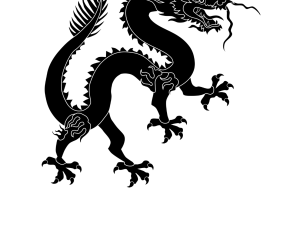 Treating Tai Yang ebook€ 18,50
Treating Tai Yang ebook€ 18,50
Understanding the Foundation of Chinese Medicine: Qian Heaven and Kun Earth
Discover the profound cosmological principles that form the bedrock of Chinese Medicine in this illuminating exploration of Qian (Heaven) and Kun (Earth). This comprehensive guide reveals how these fundamental concepts connect Traditional Chinese Medicine to its ancient philosophical roots while remaining vitally relevant to modern clinical practice.
Inside you’ll discover:
- How Qian and Kun represent the functional aspects of Qi that unify the Five Elements and Six Conformations
- Deep insights into the pre-heaven and post-heaven relationships of Fire and Water
- Clear explanations of how transformation and change occur in the body
- The crucial role of Earth in birthing and harmonizing the elements
- Practical connections between cosmological principles and clinical applications
What makes this guide unique is its ability to bridge theoretical understanding with practical application, demonstrating how these ancient concepts directly inform diagnostic methods and treatment strategies in modern Chinese Medicine.
Whether you’re a practitioner seeking to deepen your theoretical foundation or a student trying to grasp the philosophical underpinnings of Chinese Medicine, this resource provides crucial insights into how Qian and Kun connect all aspects of Chinese medical theory into a coherent whole.
Transform your understanding of Chinese Medicine by mastering these essential concepts that have guided practitioners for millennia.
The Union and Separation of the Conformations
Discover a profound exploration of Chinese Medicine’s foundational concepts in Paul Freedman’s comprehensive work “The Union and Separation of the Conformations.” This thoughtful text delves deep into the intricate relationships between the six conformations (liu jing bian zheng), their connections to the I Ching, and their essential role in understanding health and disease.
Drawing exclusively from the Yellow Emperor’s Classic (Huang Di Nei Jing), Freedman illuminates how the eternal Dao manifests through the conformations, offering readers a sophisticated analysis of how these principles operate within the body and their relationship to the seasons, elements, and organs.
Key features of this work include:
- Detailed exploration of the philosophical foundations underlying the six conformations
- Clear explanations of the relationship between Heaven, Earth, and Human
- In-depth analysis of yang ming and jue yin and their unique significance in Chinese Medicine
- Practical understanding of how the conformations manifest in health and disease
Whether you’re a practitioner of Chinese Medicine seeking to deepen your theoretical understanding or a serious student exploring the classical foundations of this medical system, this book provides valuable insights into one of Chinese Medicine’s most complex and powerful diagnostic approaches.
The Foundations of Classical Chinese Medicine
The document, The Foundations of Classical Chinese Medicine, explores the foundational principles of Chinese medicine and Daoist philosophy, linking these concepts to cosmology, natural cycles, and metaphysical theories. It covers the role of key elements like Yin, Yang, Qi, and Jing in understanding the universe, health, and the human body. Ancient Chinese thought sees human beings and the cosmos as interconnected, with health depending on harmonizing with nature’s cycles and energies. Symbolism from texts like the I Ching illustrates these dynamics, with hexagrams and trigrams representing natural phenomena, seasonal cycles, and cosmic energies. The document also emphasizes the Dao, or “the Way,” as the ultimate, undefinable source from which all things emerge, underscoring a holistic perspective on health, existence, and the interplay between Heaven and Earth.
The document The Foundations of Classical Chinese Medicine can be seen as the base from which modern Traditional Chinese Medicine stems from. It will deepen your understanding of T.C.M. and its underlying principles.
Unlock the Ancient Wisdom of Chinese Medicine’s Most Influential Clinical Text
“The Clinical Gateway: Disease Triggers in Zhang Zhongjing’s Shang Han Lun” offers practitioners and students an unprecedented deep dive into the sophisticated diagnostic framework that has guided Chinese medicine for nearly two millennia. This groundbreaking analysis transforms complex classical theory into practical clinical insights for modern practice.
Why This Text Is Essential:
Comprehensive Analysis: Discover how Zhang Zhongjing’s ingenious system of disease triggers reveals the hidden patterns of illness progression and transformation
Clinical Precision: Master the art of identifying specific constellations of symptoms that point to the most effective therapeutic strategies
Practical Application: Bridge the gap between classical theory and modern practice with clear explanations of how disease triggers reflect disruptions in normal physiological processes
Systematic Organization: Navigate the Six Conformations framework with confidence, understanding how each level of disease requires a distinct therapeutic approach
Perfect for:
– Practitioners seeking to enhance their diagnostic skills
– Students looking to build a strong foundation in classical theory
– Researchers interested in the theoretical foundations of Chinese medicine
– Clinicians wanting to improve treatment outcomes through precise pattern identification
This definitive guide illuminates Zhang Zhongjing’s clinical genius, revealing how careful observation of disease triggers can guide practitioners toward the most effective therapeutic interventions. Whether you’re a seasoned practitioner or a student of Chinese medicine, this text provides the keys to unlock deeper clinical understanding and achieve better treatment outcomes.
Transform your practice with the timeless wisdom of the Shang Han Lun, made accessible and clinically relevant for the modern era.
“An invaluable resource that brings clarity to one of Chinese medicine’s most important classical texts. Essential reading for anyone serious about mastering the art of Chinese medical diagnosis.”
